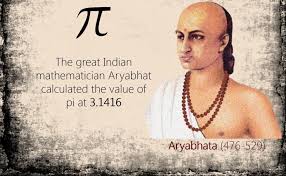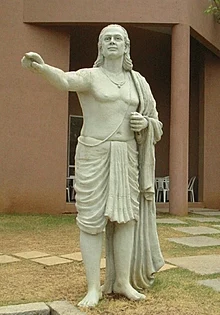Who was Aryabhatta?
Aryabhata, also called Aryabhata I or Aryabhata the Elder, (born 476, possibly Ashmaka or Kusumapura, India), astronomer and the earliest Indian mathematician whose work and history are available to modern scholars. He is also known as Aryabhata I or Aryabhata the Elder to distinguish him from a 10th-century Indian mathematician of the same name. He flourished in Kusumapura—near Patalipurta (Patna), then the capital of the Gupta dynasty—where he composed at least two works, Aryabhatiya (c. 499) and the now lost AryabhatasiddhantaAryabhatasiddhanta circulated mainly in the northwest of India and, through the Sāsānian dynasty (224–651) of Iran, had a profound influence on the development of Islamic astronomy. Its contents are preserved to some extent in the works of Varahamihira (flourished c. 550), Bhaskara I (flourished c. 629), Brahmagupta (598–c. 665), and others. It is one of the earliest astronomical works to assign the start of each day to midnight. Aryabhatiya was particularly popular in South India, where numerous mathematicians over the ensuing millennium wrote commentaries. The work was written in verse couplets and deals with mathematics and astronomy. Following an introduction that contains astronomical tables and Aryabhata’s system of phonemic number notation in which numbers are represented by a consonant-vowel monosyllable, the work is divided into three sections: Ganita (“Mathematics”), Kala-kriya (“Time Calculations”), and Gola (“Sphere”).

Childhood & Early Life
Aryabhata’s birthplace is uncertain, but it may have been in the area known in ancient texts as Ashmaka, which may have been Maharashtra or Dhaka or in Kusumapura in present day Patna. Some archaeological evidence suggests that he came from the present day Kodungallur, the historical capital city of Thiruvanchikkulam of ancient Kerala - this theory is strengthened by the several commentaries on him having come from Kerala. He went to Kusumapura for advanced studies and lived there for some time. Both Hindu and Buddhist traditions, as well as Bhāskara I, the 7th Century mathematician, identify Kusumapura as modern Patna.
Major Works
Aryabhata’s major work, Aryabhatiya, a compendium of mathematics and astronomy, was extensively referred to in the Indian mathematical literature, and has survived to modern times. The Aryabhatiya covers arithmetic, algebra, and trigonometry.
